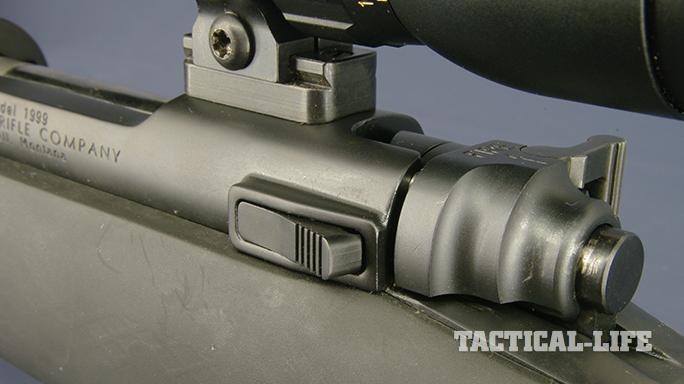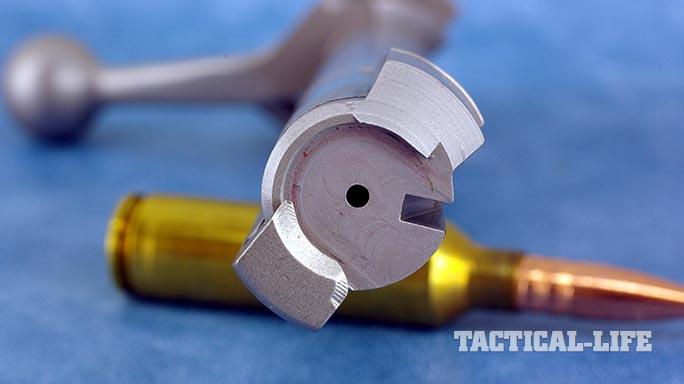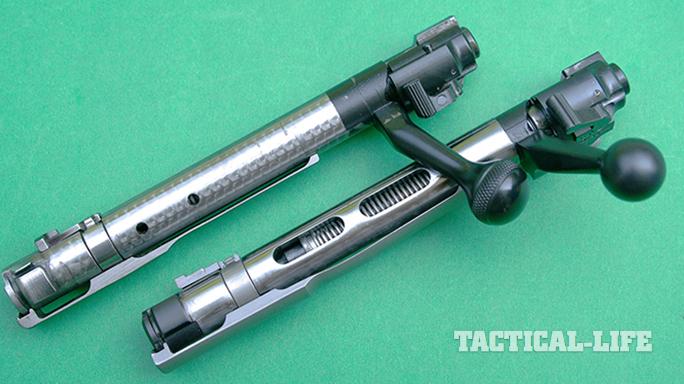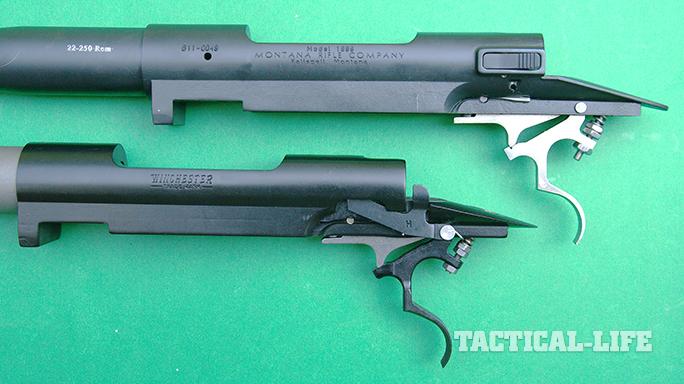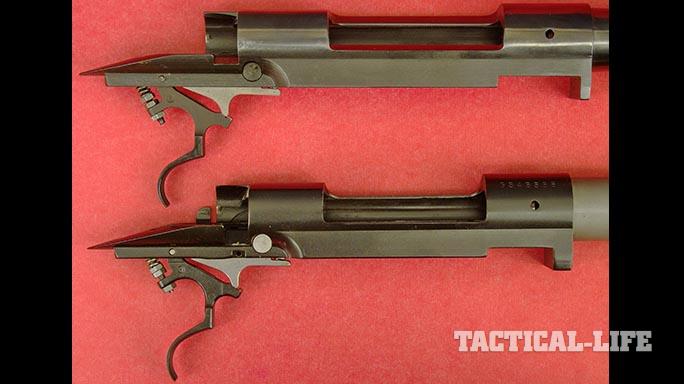If it’s true what they say about imitation being the most sincere form of flattery, then the Mauser Model 1898 should still be blushing today, 118 years after its debut. First, the 1903 Springfield copied the 1898’s major operating features. Next came Charles Newton’s original turnbolt of 1914, the first commercial action to borrow heavily from the Mauser. In 1925, Winchester introduced its Model 54, and in 1936, its iconic Model 70. Both were Mauser-type actions with modifications that made them more suitable for sport hunting.
For nearly 30 years, the Winchester Model 70 set the standard; it quickly established itself as the “rifleman’s rifle,” the one gun every hunter aspired to own. Though it was more expensive than a Remington—its most serious competitor during those years when the bolt-action rifle was in its ascendency—it wasn’t too expensive for most serious hunters and shooters. And there was no incentive for other manufacturers to copy it. After all, the gun was available if you had the money, and surely no small manufacturer could have produced a clone nearly as economically. Then, too, protective patents may have had something to do with its relative individuality (its Mauser heritage aside), though patents do expire.
Then came the early 1960s, when the Winchester folks decided the Model 70 was too expensive to make. Thus came the “post-Model 70 era,” which, for nearly 25 years, resounded with the laments of rifle cranks bemoaning that thing that had the temerity to call itself the Model 70!
Advertisement — Continue Reading Below
I believe it was Don Allen, the founder of Dakota Arms, who, in 1987, was first to manufacture what was virtually a pre-64 Model 70 clone, calling it the Dakota 76. Surely the success of the Dakota rifle had some influence on Winchester, especially when you consider that it cost roughly three times what a Model 70 did. That, coupled with the fact that the Winchester folks were getting tired of hearing pleas ad nauseam to bring back the “pre-64” Model 70, led to the original’s reappearance in 1992. Winchester calls it the “Model 70 Classic.”
Montana Rifle Company’s Own

Another maker that found it worthwhile to copy the basic Model 70 was the Montana Rifle Company, a small-barrel making and custom gunsmithing operation in Kalispell. I emphasize the word “basic” as the company’s founder, Brian Sipe, identified several improvements to the Model 70, even though the new Winchester version was also an improvement on the original design. He also felt he could produce it a lot more economically than the folks at Dakota Arms or Winchester.
To that end, he decided that his action would be investment cast, just like Ruger’s Model 77 Mark II. That way he could have a flat-bottom receiver and a one-piece bolt with an integral handle, which required far less machining than did forgings. As it turned out, all Montana actions come from Ruger’s Pine Tree Casting Division in Newport, New Hampshire, which is where Ruger makes its actions.
Advertisement — Continue Reading Below
The result: The Montana Model 1999 action was introduced in 2001, with complete barreled actions to follow. A couple of years after that, the company began selling complete rifles. In fact, there are now several models in the line ranging from lightweight sporters to dangerous game and tactical models. Many of these rifles come in right- or left-handed actions, in blued chrome-moly or stainless steel, and with short, long or true magnum-length actions.
Oddly, Montana Rifle Company waited until 2012 to offer a heavy-barreled varmint rifle, the HVR, and I was fortunate to get the first example. While this particular gun is no longer available, the company still offers plenty of options with just as much quality and performance.
Gun Details

It is impossible to describe the Montana 1999 action without always referencing the Model 70 Classic. They are so much alike and yet different in minor but vital ways. Being a .22-250 Remington, my test gun was built with the short Model 1999 action, the footprint of which is almost identical to that of the Model 70. This similarity means that, unlike other short-action rifles, which are limited to overall cartridge lengths of 2.75 or 2.8 inches, this rifle (and a short-action Model 70) can digest cartridges up to 3.1 inches in length.
Advertisement — Continue Reading Below
Though it’s irrelevant to a stubby round like the .22-250 Remington, this is nevertheless an important detail because it offers the potential to make rifles in any of the Winchester Short Magnum cartridges. It also lets handloaders seat heavier bullets to where they do not infringe on usable powder space. The only difference then between the action on the test gun and a short magnum action is in the bolt face and feed rail span.
The only dimensional difference in the footprint of the short Model 70 Classic action and the Model 1999 is in the length of the receiver ring. On the Model 70, the face of the receiver is on the same plane as the forward surface of the recoil lug. On the Montana rifle, the ring extends forward 0.13 inches. In other words, the Montana Rifle Company receiver ring is slightly longer. Also, the receiver ring has vent holes on both sides, rather than just one, and there’s an inner collar against which the barrel breech abuts, just like on the Mauser 98 (but not on the Model 70). This annular ring inside the receiver ring strengthens it, and it—not the barrel breech—is coned and slotted to accept the nose of the extractor.
Other noteworthy differences found on the Montana Rifle Company action are on the bolt itself. The bolt body has two vent holes that align with the magazine when in battery; the Model 70 has two 0.13-inch holes. Another difference is the left locking lug. On the Montana, it’s pie-shaped. In other words, it’s narrower at it base. The tapering is subtle but easily discerned on close inspection. This tapered lug provides more lateral support for the bolt. To that end, there’s almost no play in the bolt when it’s fully withdrawn.
Advertisement — Continue Reading Below
At the rear of the bolt, the shroud containing the three-position safety (and also acting as a gas baffle) is very similar to that found on a Model 70. It differs in that on the left side it’s wider to completely cover the left lug raceway, which deflects gases away from the shooter’s face in the event of a pierced primer or case-head separation.
The excellent Model 70 trigger is carried over to the 1999 in every detail. In fact, when viewed side by side, they look interchangeable. Almost identical are the hinged floorplate bottom metal units, right down to the push-button release latch.
The barrel on my test gun was 24 inches in length and measured 0.7 inches at the muzzle, making it fairly light for a dedicated varmint rifle. With Montana Rifle Company’s original role making barrels, the company naturally uses its own button-rifled barrels for all of its complete rifles. The barreled action of the test gun had a matte blue finish, which is appropriate for a working rifle.
Advertisement — Continue Reading Below
The long and short of it is that the Montana action’s stock inletting—the entire receiver, the bottom metal unit and the barrel footprint—is so similar to that of the Model 70. With minor fitting and judicious use of bedding epoxy, a stock inletted for a Model 70 works for the Montana barreled action. That, however, isn’t necessary if Boyds or Bell & Carlson make a drop-in to your liking; both offer stocks inletted for the 1999. I like the fact that the company offers barreled actions for those who, like me, prefer to stock their own rifles.
The stock on my test HVR came from Hogue, and it’s covered with a rubbery epidermis that is both soft and warm to the touch. The grip panels sport molded-in stippling patterns that provide added purchase for the hands, even when wet.
On The Range

To see what the test gun could do from the bench, I mounted a fixed-power 16x42mm Sightron scope in a Talley mount. Sightron makes a comprehensive line of scopes ranging from the moderately priced to the expensive. This scope is based on a 30mm body tube and comes with a modified mil-dot reticle; it represents Sightron’s top of the line. I really like this scope, too. This is just about as much magnification as I want, even on a prairie rat rifle.
Advertisement — Continue Reading Below
For me, going up from there in power results in too small a field of view and requires refocusing when shooting distances can vary from 75 to 400 yards. At 16X, the image fuzziness is not so noticeable, but when it is necessary to refocus, the focus knob’s position on the side of the adjustment turret is so much more convenient than having to crank the objective bell.
- RELATED STORY: Custom-Style Precision – The Bergara B-14 Rifle Series
Anyway, from my ammo cache I chose five factory loads: Federal’s Premium 40-grain Sierra HPs, Remington’s Premier Varmint 50-grain V-MAXs, Hornady’s Superformance 50-grain V-MAXs, Winchester’s Supreme 52-grain BTHPs and Federal’s 55-grain Sierra BlitzKing rounds.
Predictably, once I got to the range, there were no surprises. Everything functioned right—feeding, extraction and ejection. At 3 pounds, the trigger was just a tad stiffer than I would like on a varmint rifle, but it was crisp with no creep, so I chose not to mess with it.
Advertisement — Continue Reading Below
The 50-grain Hornady Superformance load was the most accurate, turning in three 5-shot groups that averaged 0.76 inches, but two others were no slouches, as the Winchester and Remington loads averaged 0.91 inches and 1 inch, respectively.
Making The Grade

This rifle was not the first Montana Rifle Company product to pass through my hands. If memory serves, this is the fifth I’ve tested, and I’ve been impressed enough to have purchased three. If you’re a fan of the Winchester Model 70 Classic, you’ll find Montana Rifle Company’s rifles irresistible. And though this particular varmint rifle is no longer in production (check secondary markets), the company offers similar rifles that should suit your needs well.
Caliber: .22-250 Remington
Advertisement — Continue Reading Below
Barrel: 24 inches
OA Length: 42 inches
Weight: 8.5 pounds (empty)
Stock: Hogue OverMolded
Sights: None
Action: Bolt
Finish: Matte black
Capacity: 4+1
MSRP: N/A
For more information on the HVR and other products from Montana Rifle Company, visit montanarifleco.com.
This article was originally published in “The Complete Book of Guns” 2018 #200. To get a copy, visit outdoorgroupstore.com.

